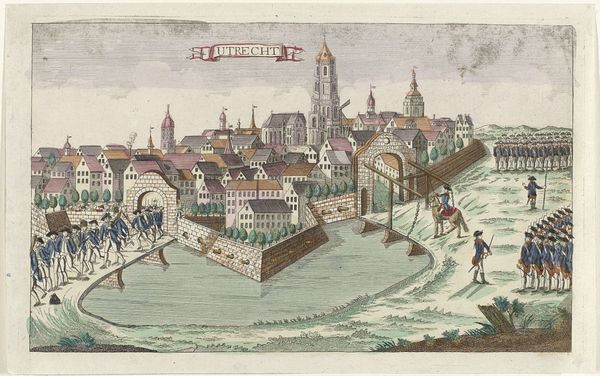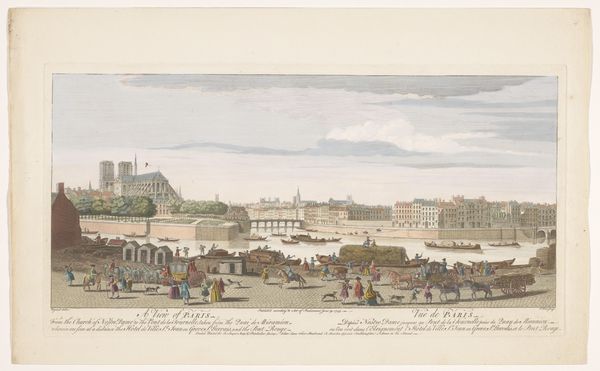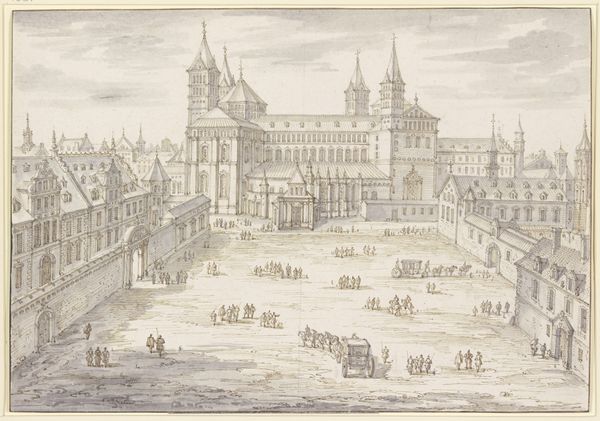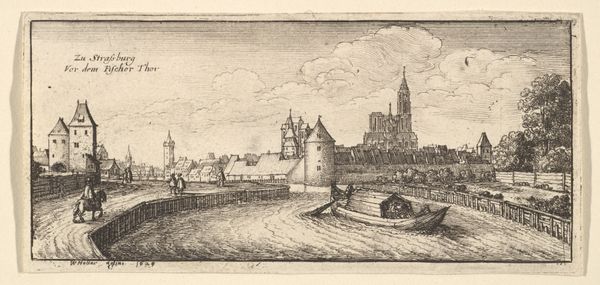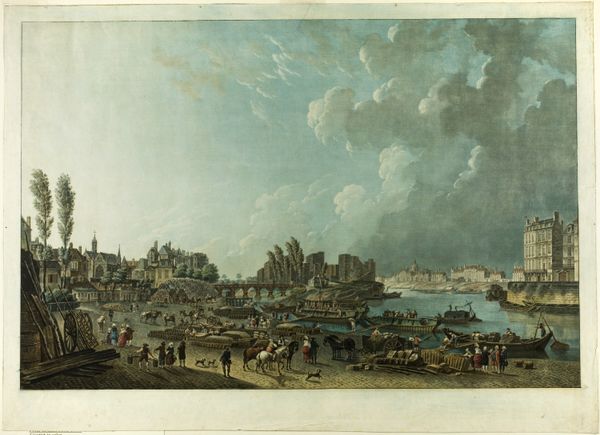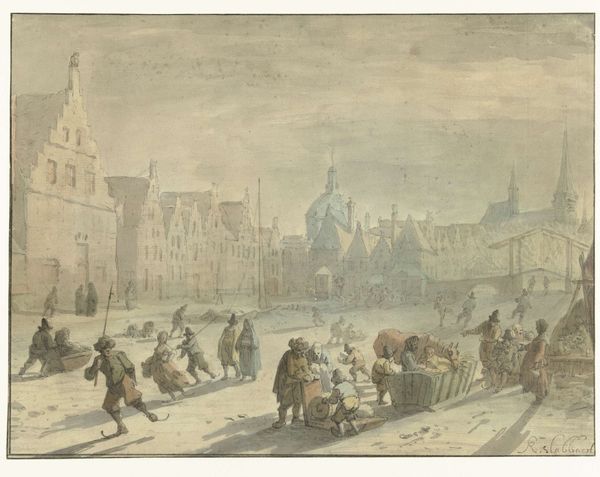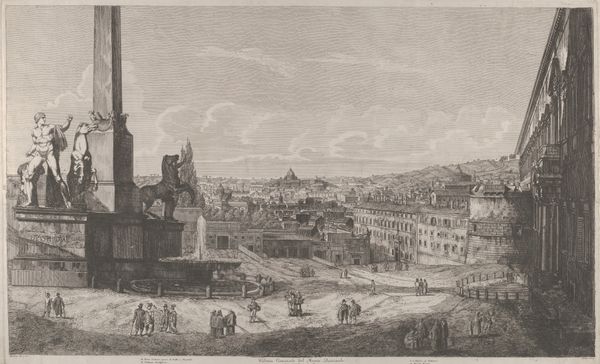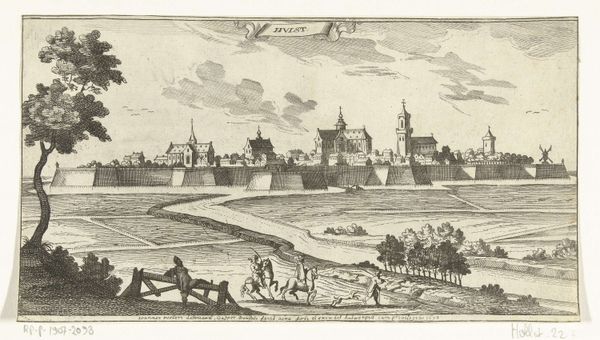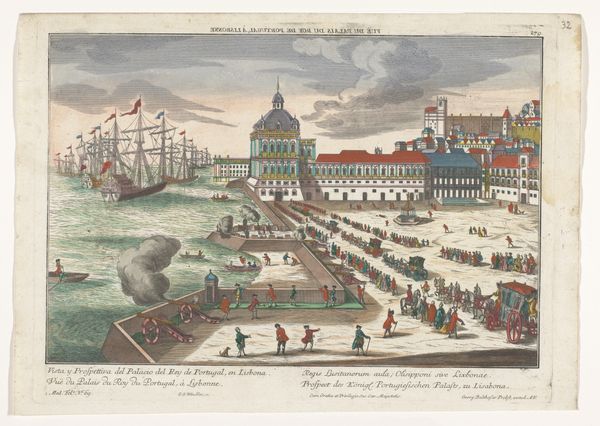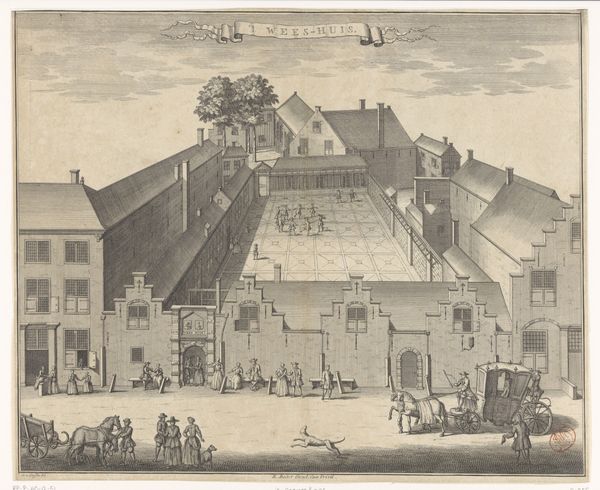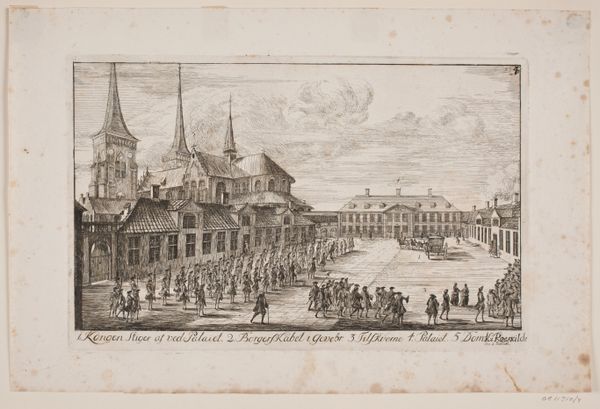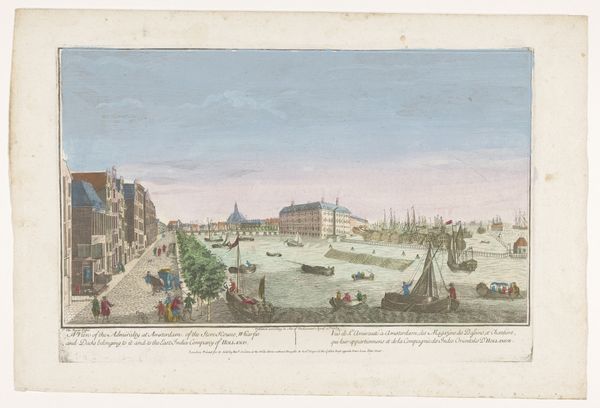
The Tower and Mint from Great Tower Hill, plate two from Original Views of London as It Is 1842
0:00
0:00
drawing, lithograph, print, etching, plein-air, paper, engraving
#
drawing
#
street-art
#
lithograph
# print
#
etching
#
street view
#
plein-air
#
landscape
#
paper
#
coloured pencil
#
england
#
romanticism
#
cityscape
#
engraving
Dimensions: 195 × 430 mm
Copyright: Public Domain
Editor: Here we have Thomas Shotter Boys' "The Tower and Mint from Great Tower Hill, plate two from Original Views of London as It Is," created around 1842. It's a print combining lithography and etching, among other techniques. I'm immediately drawn to the detailed depiction of everyday life against the backdrop of such historical structures. How do you interpret this work in terms of its historical context? Curator: Well, this print is a fascinating window into Victorian London, and its power lies in depicting these structures as part of the burgeoning urban landscape, right? Notice how Boys positions the Tower and the Mint—symbols of power and wealth—not in isolation, but embedded in a bustling scene of commerce and daily routines. It almost democratizes them, inserting them into public life. Editor: So it's making a statement about accessibility and the public role of these institutions? Curator: Precisely! By the 1840s, England was experiencing rapid industrialization and urbanization. Boys' choice to show these monuments alongside street vendors, children playing, and fashionable individuals, highlights a shift in their cultural relevance. Were these historical sites changing their socio-economic functions? Or just their image? Editor: That’s a great question. I hadn’t considered the tension between these timeless symbols and the transient nature of city life at the time. Curator: Consider, also, the deliberate choice of media – the relatively new technique of lithography made detailed images accessible to a wider audience. It wasn’t just about seeing London; it was about possessing a view of London. How does this relate to a rise in tourism? Editor: I suppose making London accessible to all would give the elite less prestige? I can also see the artist democratizing public spaces in their art. I've learned to appreciate this as more than just a pretty cityscape. Thanks for opening my eyes! Curator: My pleasure! Thinking about art as part of its social and economic world can really deepen our understanding and appreciation.
Comments
No comments
Be the first to comment and join the conversation on the ultimate creative platform.
